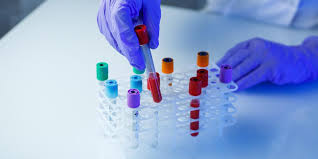The safety of the transportation industry depends heavily on the reliability and alertness of its workforce. Drug screening is a crucial measure to ensure that employees in this essential sector are both competent and fit to perform their roles safely. In this blog, we explore how drug testing enhances transportation safety and its broader impact on public and workplace health.
The Significance of Drug Screenings in Transportation
Drug screenings are critical in maintaining safety standards across all modes of transportation. In a field where the safety of countless individuals is at stake, ensuring that drivers, pilots, and other personnel are free from the influence of drugs is non-negotiable.
- Enhanced Safety: The primary goal of drug screenings is to detect and deter substance abuse among transportation workers, which directly correlates with reduced accident rates and enhanced public safety.
- Regulatory Compliance: Drug screening serves as both a critical safety measure and a necessary regulatory requirement. Compliance with these standards enables transportation companies to avoid legal penalties while safeguarding their operating licenses.
- Trust and Reliability: Regular drug testing helps build public trust in transportation systems, reassuring passengers that the individuals in charge of their journey are sober and competent.
How Drug Screenings Work in Transportation
The process of drug screening in the transportation sector is designed to be thorough and efficient, ensuring that all personnel are tested under fair and standardized conditions.
- Types of Tests: The most common types of drug tests include urine testing, blood testing, and hair follicle testing, each serving different purposes and detection windows.
- Pre-employment Screening: Before hiring, transportation companies conduct drug tests to ensure that new hires do not have a history of drug abuse.
- Random Testing: To discourage ongoing substance use, random drug tests are conducted throughout an employee’s tenure. These unannounced tests are crucial for catching and addressing drug use proactively.
- Post-accident Testing: Following any incident or accident, drug testing is performed to determine if substance use was a contributing factor. This is crucial for learning from the event and preventing future occurrences.
Challenges and Best Practices in Implementing Drug Screenings
Implementing an effective drug screening program involves overcoming challenges related to privacy concerns, the accuracy of tests, and the handling of sensitive information.
- Respecting Privacy: It is vital to balance the need for drug screenings with respect for personal privacy. Transparent communication about the testing process and handling results discreetly are essential practices.
- Ensuring Accuracy: Employing reliable and precise testing methods minimizes the risk of false positives or negatives, which can significantly impact an individual’s career and life.
- Continuous Improvement: Keeping up with advancements in drug testing technology and methodology ensures the process remains both fair and rigorous.
Conclusion
Drug screenings in Oregon are essential for maintaining safety and reliability in the transportation industry. By promoting a drug-free workplace, these measures not only safeguard public safety but also uphold the integrity and professionalism of the sector. Transportation professionals—whether truck drivers or airline pilots—carry significant responsibility. Even minor lapses in judgment or performance caused by substance use can lead to catastrophic outcomes. Drug screenings play a critical role in mitigating these risks by identifying issues before they affect operations.
As the industry evolves with technological advancements and regulatory changes, drug testing strategies must also adapt. This includes leveraging innovative testing technologies, implementing more comprehensive protocols, and addressing the rise of new substances of concern. For transportation companies and regulatory bodies, maintaining a strong commitment to effective and consistent drug screening is vital. These efforts not only ensure compliance with safety standards but also reinforce public trust, protect the industry’s reputation, and safeguard both workers and the communities they serve.
Read more : Understanding Mental Health Leave in Australia

